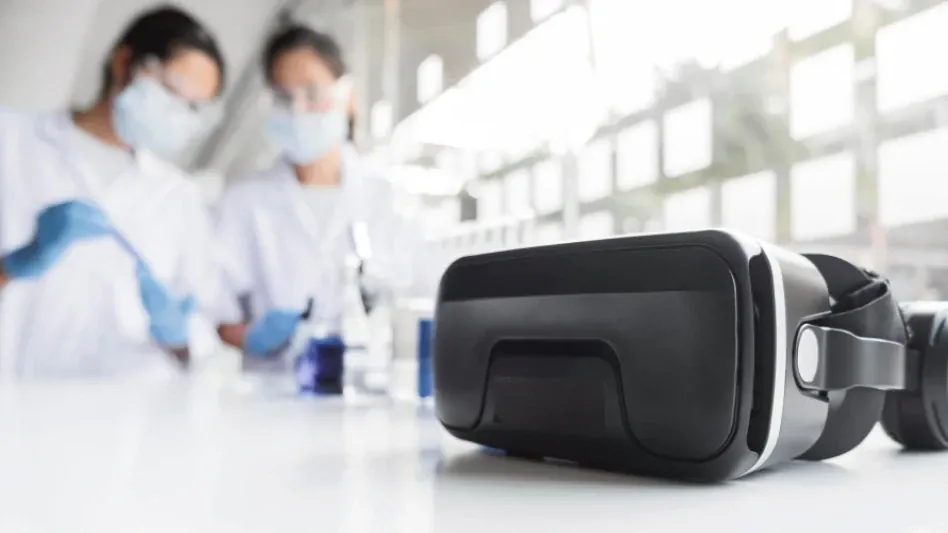The recent surge in AI enthusiasm has encouraged big thinking, with LinkedIn feeds brimming with visionary AI solutions promising to rescue healthcare. Indeed, these are “exciting times,” as numerous posts often conclude. However, it is time for leaders to get down to business and focus on refining existing practices while innovating new ways of providing healthcare. In other words, thriving in today’s complex and dynamic environment requires “organizational ambidexterity.” This refers to an organization’s ability to simultaneously exploit its current capabilities while exploring new opportunities.
In healthcare, this “exploration-exploitation trade-off” translates to leveraging established practices and protocols that have stood the test of time while embracing innovative technologies, treatments, and management strategies that could potentially revolutionize patient care and operational efficiency. To help guide healthcare leaders on this journey, we are exploring six steps for optimizing the value of both tradition and transformation in healthcare.
1. Establish Clear Goals
This is key. For example, UNC Health identified a clear need to revamp the patient messaging process to ease clinician workload. By adapting their policies, educating patients and staff, adjusting EHR configuration, and developing team-based workflows, they reduced the volume of patient messages reaching clinicians’ inboxes by 25% and cut the time staff spent on messages by up to 60%. Rather than exploring new digital solutions, UNC optimized its existing tools to improve outcomes. In other words, a clear objective, rather than the hype surrounding emerging tech, drove their decision-making.
Leaders should first optimize existing systems before jumping into new technologies. Start by identifying specific pain points and measurable objectives. Audit your current workflows and systems to identify inefficiencies. Train staff on better practices and test incremental changes. This approach maximizes current tools to quickly deliver results without large-scale investments. When current systems fall short, look to new technology that directly solves the problem. Identify gaps and then explore novel solutions like GenAI. Leaders should pilot emerging technologies to ensure they meet clearly defined objectives before wide adoption. The key is focusing on technology as a solution to an existing, unmet need, not as a trendy innovation.
From an exploration perspective, The Permanente Medical Group (TPMG) harnessed new technology to reduce the clinician documentation burden. Over a ten-week pilot period, one in three eligible clinicians used “ambient intelligence” to automatically generate clinical notes. Participating doctors spent significantly less time documenting without degrading note quality. In this example, the objective exceeded the capabilities of existing tools, prompting TPMG to embrace innovative tech to meet clinicians’ needs. Again, it was the objective, not the hype, driving decision-making.
2. Form Cross-Functional Teams
Diverse perspectives remove bias blind spots and enhance effectiveness. For example, Texas Children’s refined existing practices by forming a cross-functional workgroup (clinicians, research nurses, data specialists, and others) to implement a comprehensive “Three Systems Approach” – analytics, content, and deployment systems – to improve appendectomy procedures. Using real-time analytics and deploying evidence-based content into daily operations, the team co-created improved care practices, increased clinician trust, and ultimately boosted performance. Done right, these cross-functional teams bring unmatched clarity to addressing inefficiencies through a culture of cooperation.
When it comes to exploring new ways of doing things with cross-functional teams, Mayo Clinic partnered with Google to develop the “AI Factory,” a hub of consultants, educators, clinical staff, and legal experts established to remove silos and barriers, allowing diverse groups to collaborate on cutting-edge projects. Here, Mayo’s cross-functional approach helps orchestrate especially the cohesive and safe exploration of new technologies, preventing duplication of efforts and risky initiatives. Leaders must utilize diverse perspectives not only to refine existing practices but also to scale emerging solutions safely.
3. Evaluate Readiness for Change
The next step – readiness for change – isn’t solely about large-scale innovation. It’s equally about refining existing business practices. For example, one of the authors worked with Omada Health to develop 10 KPIs for assessing readiness to leverage data. By focusing on the fundamentals of change and introducing simple, data-driven adjustments to existing practices – such as setting alerts for providers to follow up with patients within seven days of their initial encounter – they increased patient Net Promoter Scores by six points in just six months. The key here is assessing whether your organization is fully utilizing existing tools. Conduct regular audits of current processes and systems to ensure they are being used efficiently and introduce incremental changes that align with organizational goals.
On the exploration side of readiness, Intermountain Healthcare established the Data Science and Artificial Intelligence Center of Excellence to establish standards, set goals, and guide change. A part of that initiative was implementing an “AI Playbook” to “deploy and scale human-centered AI that is transparent, equitable, ethical, and, above all, ensures patient privacy.” The playbook outlines goals to establish appropriate AI governance, set validation and documentation standards, detect inherent bias, ensure data integrity, and promote AI literacy among caregivers. It’s an excellent example of developing a strategic innovation agenda to assess and boost readiness. This groundwork promoted the safe and effective adoption of, and satisfaction with, novel technologies. If new solutions were needed, readiness for change focused on ensuring that the organization was prepared for the risks and opportunities of innovation.
4. Allocate Resources Appropriately
Ambidextrous organizations also critically examine how to balance tradition and transformation from a financial perspective. To accomplish this goal, the Mayo Clinic Platform outlined a rubric for tech-specific budgeting, which includes the following questions: Is it strategic? It may be really cool tech, but what is the imperative, and is it addressing a current need? Is there a quality or safety imperative? Don’t become a healthcare institution of lesser quality by standing still. Is there a compliance or regulatory mandate? If something could result in an action against you, pay attention. What’s the impact factor? Do what impacts more patients, providers, social workers, and other stakeholders. Is there a revenue impact? Is there a cost reduction or significant impact to profit and loss?
Leaders must ensure they dedicate resources to clearly defined strategic, patient-centered goals. Prioritize investments in solutions that improve patient outcomes, ensure quality, and meet regulatory standards. Ambidextrous organizations also adjust their investments over time. For example, UW Health puts its tech budget into three buckets: running the business, growing the business, and transforming the business. UW initially allocates most dollars to run the business, and as efficiency increases and costs go down, it redirects more funds to the growth and transformation buckets. This staged approach prioritizes the core business while working towards exploration.
5. Foster a Culture of Experimentation
Next, experimentation is core to both optimization and innovation. On the optimization side, MD Anderson Cancer Center researchers used patient flow analysis (PFA) to surface workflow inefficiencies and then developed and tested various tactics to improve flow. Establishing such teams, with deep knowledge of existing practices and a mandate to experiment safely, optimizes existing resources and enhances efficiency. Encourage people to challenge the status quo. Then provide them with autonomy and the tools to run small experiments, driving teams to optimize existing processes based on real-time data. Reward these efforts, even those that do not achieve immediate results, to foster a mindset that values learning.
When it comes to experimenting with new solutions, researchers at NYU Langone Health developed NYUTron, a large language model-based system that integrates in real-time with clinical workflows centered around documentation and order entry. This model outperformed traditional methods for predicting 30-day readmission rates and other outcomes such as insurance denial and length of stay. NYU’s experience highlights the importance of building lean, agile teams and equipping them with the technical skills to rapidly explore and innovate.
6. Integrate Feedback Loops
When it comes to feedback, Cleveland Clinic developed its Severity Scale to categorize, assess, and triage patient complaints and provide real-time insights into specific processes and practices needing attention. After finding that 25% of grievances were related to communication breakdowns, their leadership teams, armed with this granular knowledge, could rapidly create tailored patient experience strategies, set precise targets to improve performance, and prioritize resources with greater accuracy. Leaders should establish feedback mechanisms that allow for continuous improvement. Use feedback collected through surveys or focus groups to identify inefficiencies and refine existing processes.
Establishing formal feedback is also crucial for exploring emerging technologies. For example, during the development and deployment of an AI tool called SepsisWatch, Duke Health researchers used end-user feedback to continually refine the tool to the point clinicians wanted to use it. The key was drawing on established design principles, utilizing subject matter experts, and investing in talent such as user experience and user interface professionals to elicit and leverage user feedback.
The Path Forward
Healthcare leaders who adhered to these six recommended steps managed to leverage their organizations’ current strengths while simultaneously fostering new capabilities. This approach of being ambidextrous allowed them to steer through the unpredictable nature of healthcare evolution skillfully. By doing so, they ensured their organizations could strike a balance between maintaining tradition and driving transformation.
The complexity involved in the healthcare sector requires leaders to be adaptable and forward-thinking. Embracing both innovation and established practices is crucial for sustained success. By focusing on both sides, healthcare leaders not only prepared for current challenges but also laid the groundwork for future advancements.
By following a structured approach, they could identify their organizations’ core competencies and apply them effectively. At the same time, they could recognize areas needing improvement or reinvention, investing in new technologies, training, and methodologies to stay ahead in the competitive healthcare landscape.
This dual focus ensured the organizations were resilient and agile, capable of maintaining operational excellence while also being prepared to pivot as needed. Balancing tradition with transformation wasn’t just about surviving in a rapidly changing environment but thriving and leading in it. Thus, healthcare leaders who embraced this dual approach navigated the complexities of the industry with greater confidence and success.









